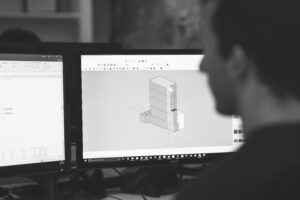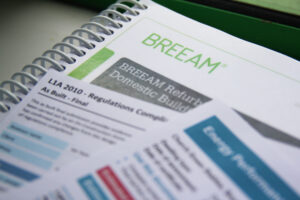SBEM, or the Simplified Building Energy Model is an essential element in not only getting your construction project off the ground – or on the ground – but also to demonstrate how sustainable your development is.
A design stage SBEM assessment is a requirement for all building control bodies in order to commence construction for any non-dwelling construction project. So what do you need in order to get that certification?
Here’s our top 3:
1. A Good Assessor
Engaging with a qualified SBEM assessor as soon as possible makes the entire process go far smoother. SBEM assessors can review your design and make suggestions and recommendations in order to meet compliance and improve the energy performance of your building.
A good, proactive and knowledgeable SBEM assessor will be able to tell you the most effective and realistic options for achieving what you need, saving you much time, money and aggravation.
Bringing the assessor on board early means you’ll get more value out of them as they’ll be able to serve a consultative role, rather than just an assessor.
You’ll get access to their full range of knowledge and they’ll be able to give you improvement options before things go too far. Having your first assessment completed too late when the design has been finalised (or worse, when construction is already underway) will limit the amount of advice the assessor can give, and improvements will often be limited and more expensive (such as solar PV).
Ultimately an SBEM assessor is there to help, not make your life harder. Any changes they suggest will not only help you get through planning and building regulations, but also ensure that your building is fit for purpose when it’s completed.
2. Demonstrate Compliance
In order for Building Control to sign off your development they will need to ensure your project complies with 5 criteria in Part L2A (three of which are assessed through SBEM).
These are as follows:
- CO2 Emissions
The calculated Building Emissions Rate (BER) for the building must not be greater than the Target Emission Rate (TER). This is the main requirement for Part L so your SBEM calculations must meet this mandatory criterion.
- Limiting Parameters
Minimum standards must be met for individual elements such as U-values, heating and lighting. These are also checked through the SBEM assessment.
The more investment you make in these aspects, the better your overall EPC rating will be and the more appealing your building will be to potential buyers/tenants.
- Solar Gains
In order to limit the need for air conditioning systems and ensure thermal comfort, the SBEM assessment needs to demonstrate that appropriate measures have been taken for passive cooling/climate control.
Air conditioning – whilst fantastic in a hotel in the Caribbean – is an expensive and environmentally adverse solution to heating and cooling so coming up with alternatives is favourable.
- As-built Performance
The building should be consistent with the BER in practice as well as in the design. The widely publicised ‘performance gap’ is the difference between the predicted design model and how it performs in operation.
- Energy Efficient Operation
There needs to be adequate provision for enabling energy efficient operation once the building is complete and occupied.
This makes good business sense all round as increasingly buyers, tenants and occupiers want a sustainable, energy efficient environment and are usually willing to pay extra for it.
3. Follow the Rules!
Energy assessments are highly regulated, and following the guidance as it’s laid out – as well as the advice of your assessor – is crucial to a successful project.
Whatever the scheme or certification, oversight panels audit at random a number of reports produced by assessors to ensure everything is above board.
Assessments found to be incorrect and outside of the tolerances specified will need to be resubmitted wasting time and money, and possibly leading to a non-compliant building which cannot be let or sold. Moreover, EPCs would have to be replaced on the register and a drop in energy performance can have far reaching effects, especially in commercial buildings.
If the SBEM assessor in question continually submits reports with errors – or fabrications – they will be suspended and instructed to retrain or they could potentially lose their license.
An SBEM assessor is there to be a helping hand through a difficult stage in the development process so trust them to do a good job and trust in the feedback they provide.
